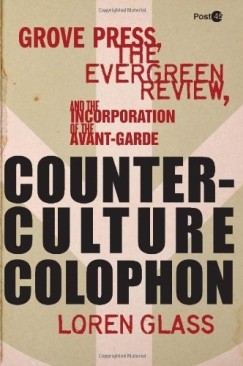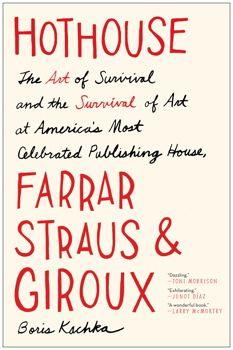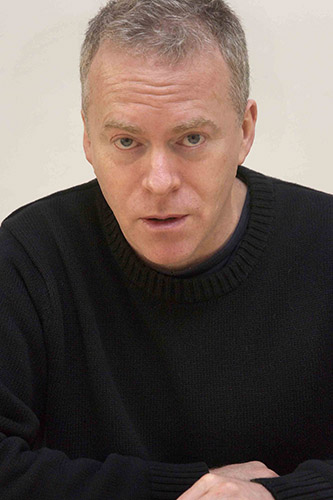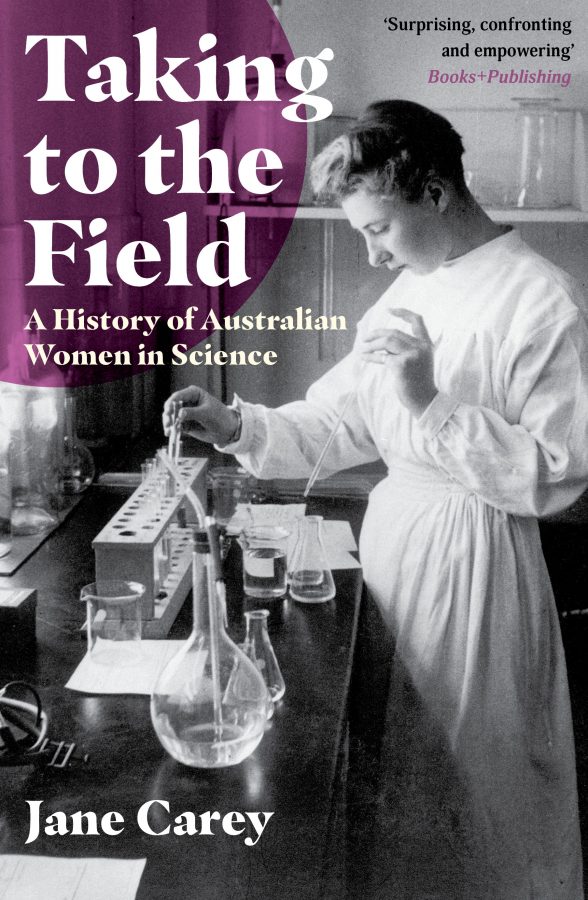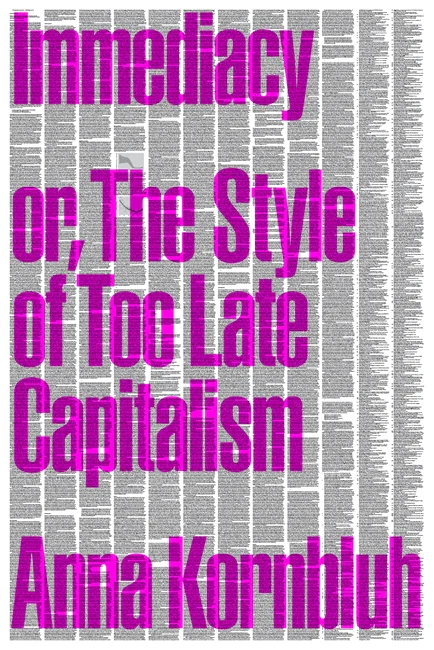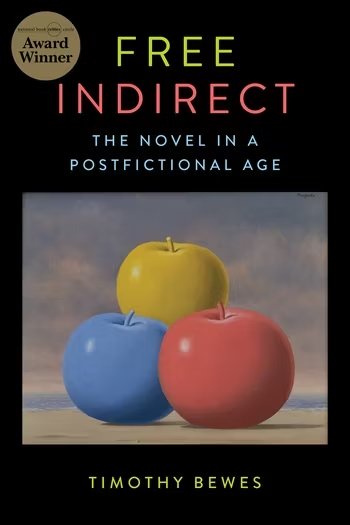In his posthumously published masterpiece 2666, Roberto Bolaño is clear-sighted enough to know that a visionary writer amounts to little without a visionary publisher. What would Benno von Archimboldi, the ‘great black shark’ of world literature, have been without Jacob Bubis, the German publisher unconditionally committed to him? It is a fictional relationship that invites us to reflect on Bolaño’s own good fortune in encountering Jorge Herralde, the founder and director of Editorial Anagrama in Barcelona. Bolaño was virtually unknown at the time. According to Marcela Valdes, he was in dire financial straits and depressed at his work having been repeatedly rejected. He showed the manuscript of Distant Star to Herralde. It had already been refused by a number of other presses, including Seix Barral, the publisher of Bolaño’s previous book. Herralde, Valdes writes, ‘found the book extraordinary.’ He went on to publish everything else Bolaño wrote.
But simply to understand the labour of the publisher in terms of such spectacular individual successes is to miss the point. We might well ask what would have become of Patrick White without the commitment of his New York publisher, Ben Huebsch at Viking. White’s career, however, would end up being a small, if significant, part of what Huebsch accomplished. As Simon During puts it, Huebsch ‘negotiated the switch by many big-name modernist writers from small presses, usually funded by patronage, to large, market-oriented publishing houses.’ He could do this partly because his view of publishing embodied so much of the high modernist ethos, and its prioritisation of aesthetic value over commercial value. As Catherine Turner writes, Huebsch saw publishing as a profession committed to ‘gentlemanly ethics, public service, and to an almost pre-modern sales ethics.’ According to During, Huebsch ‘secured’ White’s career; for David Marr, he was the ‘rock on which Patrick White’s career was built’. His idealism, however, was also a profound limitation. A disdain for economics, Turner observes, meant that Huebsch’s list accumulated cultural capital, but not high sales or a mainstream circulation. Avant-garde literary culture was beginning to find a broader readership in the US, but the elitist approach probably hindered its passage as much as it helped, a circumstance perhaps reflected in White’s virtual invisibility in the US today and his absence from scholarly work on ‘global’ modernism.
More important to the entry of the avant-garde into the American literary mainstream was an unlikely relationship between aesthetic experimentation and sexual experimentation. This proximity of the aesthetic and the sexual had a lot to do with assertions of freedom of expression in the face of government censorship. Against this background, it becomes possible to understand lists that blurred the line between the literary and the commercial, and the respectable and the obscene, as a radical challenge to the sanitised, middle-class culture of the post-war period. Barney Rosset, the founder of Grove Press and the Evergreen Review, was a key figure in this process. So too was Maurice Girodias, whose Olympia Press in Paris was central to expatriate literary life. Both of them combined a libertarian sexual politics, evident in the wide range of pornographic texts they published, with a commitment to some of the most important writers of the twentieth century: Samuel Beckett, Vladimir Nabokov, Henry Miller and William Burroughs. In this respect, both men contributed to the emergence of a counterculture that could imagine the political, the sexual and the aesthetic as expressions of each other.
As one would imagine, the world of Rosset and Girodias was a fairly volatile one. As businessmen, they both had moments of inspiration, but also moments of megalomania and nearly ruinous idiocy. This volatility offers a stark contrast with the much more mainstream Roger Straus. Straus too was one of the larger-than-life figures of post-war literary publishing. Unlike Girodias and Rosset, however, he knew how to run a publishing house. His commercial acumen, combined with Robert Giroux’s management of writers, turned Farrar, Straus and Giroux into a successful and enduring enterprise. It was a very different publishing model to the one shared by Girodias and Rosset, yet one that was just as important to the survival of the literary amidst the ravages of the marketplace. Rosset, Girodias and Straus were responsible for some of the most stunning literary coups of the post-war period, but they all imagined themselves involved in something bigger than the publication of books. For all three, it was about creating a culture, a worldview, even a world. Whatever self-interest is evident here is beside the point. Rosset, Girodias and Straus all worked to create the contexts without which individual books might never have seen the light of day. To imagine them, rather than the writers they published, standing at or near the centre of post-war literary culture is to radically reorient literary studies towards the institutional conditions that make literature possible in the first place.
It is difficult to encounter the kind of ambition embodied in these figures without also encountering its excesses. Girodias, Rosset and Straus might be central to an account of literary publishing in the post-war period; we might even describe them as being central to the invention of a contemporary sense of the literary. Yet when it comes to writing about them, it seems that their egos and libidos are just as important as their lasting cultural achievements. In fact, fashioning gossip into a legible account of cultural influence proves to be one of the great challenges of writing about publishers and the publishing industry. Does it matter that Roger Straus was supposed to have slept with Susan Sontag? Or that people were having sex in the Farrar, Straus and Giroux mailroom? Probably not, yet such details litter Hothouse, Boris Kachka’s endlessly amusing history of FSG, a company that Dorothea Straus (Roger’s long suffering, yet loyal wife) described as a ‘sexual sewer’. At times, this sort of incidental detail seems more important than anything as humdrum as institutional history, though who wouldn’t want to linger, if only for a moment, over the thought of Isaac Bashevis Singer breaking a sink while performing cunnilingus? John Calder’s account of Maurice Girodias in The Garden of Eros, by contrast, might dwell on the injections of monkey glands that the French publisher took to boost his sex drive, but such details are also strangely representative of a milieu that included Alexander Trocchi and the writers associated with the journal Merlin, latter-day libertines who apparently planned orgies (not uncommon in Paris, Calder tells us) inspired by the pornography they were writing for Girodias’s Olympia Press.
Loren Glass’s book about Barney Rosset and Grove Press, Cultural Colophon, is quite different. It gives us the odd glimpse of Greenwich Village nights fuelled by booze and amphetamines, but in general it steers clear of the gossipy tone that defines Kachka’s book and, to a lesser extent, Calder’s. It is less intimate, less salacious, and seldom succumbs to the lure of the personalities it discusses. Yet it is precisely because of this measured tone that it can describe the contours of the culture Rosset sought to create. Whereas Kachka’s book is wonderful in its evocation of the ‘Sun King supremacy’ of Straus, and novelistic in its description of a broader social milieu (striped suits, mid-Atlantic drawls, and plenty of ‘low-toned gossip about high-toned intellectuals’), Glass is more interested in mapping networks, institutions, structures and relationships than he is in evoking a mood. This approach enables him to contextualise Grove Press in terms of a wider set of social movements, embracing the counterculture and the New Left, in which obscene and experimental literature were intimately related. His book might not be as entertaining a Calder’s or Kachka’s, but it tells us far more about the institutional underpinnings of modern literary culture.
It shouldn’t surprise us to find that Glass is an academic. One of the frameworks for his discussion is the relationship between geography and cultural capital. In this respect, he takes his cue from Pascale Casanova’s The World Republic of Letters (2004) to tell the story of how Paris and New York formed a nexus at the centre of modern literary culture and publishing. Grove Press, he writes, ‘effectively siphoned cultural capital from Paris to New York in the 1950s and 1960s, reprinting and translating authors it had acquired from Éditions de Minuit, Éditions Gallimard, Éditions du Seuil, and the Olympia Press.’ In the process, Grove became arguably the ‘premier American disseminator of European avant-garde literature’. At the same time, it dramatically expanded the market for experimental writing by targeting the growing college and university populations in the US, and tapping into the currents of ‘cultural dissidence, sexual experimentation, and political upheaval’ that were central to the 1960s. The Grove list reads like a who’s who of radical cultural production, but it also enables one to move fairly frictionlessly between different conceptions of the radical. Antonin Artaud, Régis Debray, Frantz Fanon, Eugène Ionescu, Alain Robbe-Grillet, Henry Miller, William Burroughs, Jean Genet, the Marquis de Sade – if there is a self-evident commonality here, bound up with iconoclasm, we owe that largely to the ways in which Grove managed to conflate different figures and ideologies into a syncretic sense of nonconformity.
The achievement of Glass’s book is its ability to shift its focus seamlessly from the general to the specific. The discussion of the relationship between Grove and Samuel Beckett, for instance, gives us a terrifically detailed insight into the ways in which texts circulate and publishers construct readerships. Grove’s role as Beckett’s exclusive US publisher gave it an enormous cachet, but it also had to work at integrating Beckett’s writing into a public sphere that was initially bewildered by it. Rosset supported amateur theatrical productions, especially on university campuses. He also insisted that theatrical scripts could not only be read and appreciated as paperback texts, but that they were every bit as textual as theatrical. Grove would sell its one-dollar Evergreen editions of Waiting for Godot in theatre foyers. It also worked in conjunction with a range of academics to produce a critical discourse that would play a huge role in Beckett’s integration into university syllabuses. Rosset recognised the commercial power of the undergraduate market. He saw that getting a book set on university courses could guarantee a steady, seemingly perpetual stream of sales, while ratcheting up the cultural prestige of the work and the list in which it appeared. Glass is particularly good at mapping the relationships between Grove and the ‘academic industry’. By the time critics like Martin Esslin, Roger Shattuck and Hugh Kenner (many of whom were also published by Grove) had charted the genealogy of modernist literature, Rosset had cornered the market on cheap editions of avant-garde drama and had tapped into an undergraduate readership without appearing to produce textbooks. Waiting for Godot would eventually sell more than two million copies. The model, Glass shows us, was replicated with Ionescu, Brecht, Genet, and many others.
At the same time, Glass argues, Grove’s legal battles over censorship, in cases involving Lady Chatterley’s Lover (1928), Tropic of Cancer (1934) and The Naked Lunch (1959), turned the obscenity trial into an important ‘ritual of consecration whereby modernist texts could be affirmed as “classics” by experts on literary value.’ These legal stoushes underpinned Grove’s attempts to cement the relationship between experimental literature and the sexual experimentation that informed the ‘popular politics of sexuality in the 1960s’. Lawrence, Miller, Burroughs and Genet all became Grove bestsellers. Grove also published the Marquis de Sade, and did a thriving trade in Victorian pornography. But it was a slippery slope, and there were limits to the sorts of contradictions that one publishing house, however experimental, could contain. Some of Rosset’s decisions seem utterly blind to this problem. It is one thing to publish the Marquis de Sade alongside Genet and Artaud. With the formation of the Evergreen Club in the 1960s, however, Rosset seems to have let commercial ambition run ahead of his cultural agenda. According to Glass, the Evergreen Club ‘abandoned any pretension to literary value and became a source for anything sexually explicit that Rosset could acquire, including sex manuals, gay porn, stag films, and erotic art catalogues.’
The way Glass tells it, this lack of discrimination would ultimately be Rosset’s undoing. Grove underpinned its radical credentials with an impressive list of activist and militant texts, including Frantz Fanon’s The Wretched of the Earth (1961), The Autobiography of Malcolm X (1965), and Che Guevara’s Reminiscences of the Cuban Revolutionary War (1963). Grove’s sexual politics, however, was creating rifts in its own culture, and a good degree of workplace discontent. The press’s circulation of sexually explicit material underpinned its commercial viability. It had also insisted on politicising access to obscene material. But by the late-1960s, the New Left was beginning to splinter and radical feminist groups were growing increasingly disenchanted with Grove. Many of the books it published ‘provided both philosophical and practical insight into revolutionary thought and action, but many of the attitudes held by its writer and editors were patently, even virulently misogynist.’ It was around this time that Rosset decided to make the company a public corporation, which prompted calls to unionise its workforce. He also over-extended himself with the purchase of a new office building on the corner of Bleecker and Mercer Streets in Greenwich Village. Suddenly the whole undertaking was looking more like a house of cards than the countercultural ‘communications center’ Rosset had envisioned.
Glass’s description of the collapse of Rosset’s dream has a good amount of narrative drama to it:
It all came to a head on April 13, 1970, when a group of women led by activist Robin Morgan occupied the executive offices of the Mercer Street building, demanding union recognition and asserting that Rosset had ‘earned millions off the basic theme of humiliating, degrading, and dehumanizing women through sado-masochistic literature, pornographic films, and oppressive and exploitative practices against its own female employees.’
If Grove’s ‘popularization of pornography was a necessary antecedent to its political critique’, it was also Rosset’s undoing. By the time the occupiers were through with him, the man who had brought Beckett to the US and sold nearly half a million copies of The Story of O (1954) was looking thoroughly compromised: ‘No more using of women’s bodies to rip off enormous profits for a few wealthy capitalist dirty old straight white men, such as Barney Rosset!’ read an anti-Grove manifesto; ‘no more mansions on Long Island for boss-man Rosset and his executive yes-men flunkies, segregated mansions built with extortionist profits from selling The Autobiography of Malcolm X.’
The takeover did enormous damage to Grove’s credibility. The investment in the Mercer Street building was also financially crippling. By 1973 stock in the company was worthless. Rosset would later claim that he was the victim of an FBI conspiracy. Things limped on for another decade. In the meantime, Kate Millet’s Sexual Politics (1970), which attacked the misogyny of a number of figures associated with Grove, became a staple of university syllabuses, and the inherent violence of pornography had become the subject of influential polemics by figures such as Andrea Dworkin and Angela Carter, both of whom made Grove’s translation of Sade central to their work. In 1982, Grove signed Kathy Acker, a figure largely in keeping with the melding of libertine and avant-garde tendencies that had defined the press in its heyday, but also one formed by a new climate of gender politics that had largely left Rosset behind. As Glass puts it, ‘he had gone from avant-garde to arrière-garde, from hero to villain.’ He sold Grove in 1985 for two million dollars and was ‘summarily fired’. When Glass met him in 2009, he was living in New York in ‘modest circumstances’. At his death in 2012, Rosset was rumoured to be ‘almost broke’.
Rosset’s personal rise and fall might frame Glass’s book, but it does not distract from the lucid analysis that yields a compelling picture of a cultural revolution that foundered on the conditions it had itself created. Counterculture Colophon is an important work of cultural history that charts the institutional conditions through which the avant-garde and the pornographic became tightly interwoven. Glass is clear-sighted about the pitfalls of the world he evokes, but he clearly doesn’t want to throw out the baby with the bathwater: ‘the Grove Press backlist is a renewable resource of dissidence and dissent that continues to energize new generations of radical artists and activists.’ Take Kathy Acker, for instance: as Glass puts it, the Grove backlist is her ‘archive’; it is ‘her fundamental point of reference and the source of whatever cultural power her work exerts.’
John Calder’s recollections of the post-war Parisian scene in The Garden of Eros compliment Glass’s book in a number of interesting ways. Maurice Girodias’s Olympia Press, with its combination of – in Glass’s words – ‘highbrow obscurantism and pulp pornography’, was, after all, the model on which Rosset built Grove. Rosset also imported into the US many of Olympia’s authors. And as Calder shows us, Girodias felt cheated in the process. Beckett, Burroughs and Nabokov all gained important footholds by virtue of their association with Olympia, yet all did bigger business once they had moved on. What Glass describes as the siphoning of cultural capital from Paris to New York was, in some cases, quite literally based on the sale or appropriation of US rights from Olympia to Grove. Calder’s book is much more anchored in reminiscence and anecdote than Glass’s, and one of the consequences of this is that he can dwell on personal relationships that appear fleetingly in Glass’s book. We learn, for instance, how Girodias and Rosset fell out over the rights to Austryn Wainhouse’s English translations of Sade’s work. Girodias claimed he had paid for them in Paris; Wainhouse contracted them to Rosset all the same. Crueler was Rosset’s decision to have The Story of O, previously published in English by Olympia, retranslated for Grove. Indeed, there are moments in which Girodias seems like the victim of an unscrupulousness that is somehow bound up with the bigger readerships and bigger rewards of the American market.
The Garden of Eros does not dwell on these moments any more than it has to. In general, it is a generous recounting of a vast international network with Girodias, Rosset and Calder himself (as founder of Calder Publications in London) at its centre. But it is Girodias and the expatriates that gathered around him in Paris that sustain and drive the book. Crucial to the development of Olympia’s melding of the avant-garde and the obscene was Girodias’s relationship with Alexander Trocchi and the editorial group of the journal Merlin. Trocchi remains one of the most enigmatic figures in post-war literary history: an experimental novelist, pornographer, drug dealer and junkie, to name only a few of his many incarnations. He was apparently extremely charismatic. He was also dangerous company. He managed to get his American wife Lyn Hicks addicted to heroin and then insisted that she work the streets of New York as a prostitute to support their habits. Calder tells us that, according to Christopher Logue, Trocchi was a ‘criminal in the highest sense, without conscience or any moral sense.’
In The Garden of Eros, we first meet Trocchi in Paris sometime in the 1950s, lingering around cheap hotels. Together with Jane Lougee, he started Merlin in 1952. Girodias ended up financing the publication and recruiting Trocchi and others to write for him. It was through Trocchi and Merlin that Girodias got his hands on Beckett, publishing Molloy (1951) and Watt (1953). It was also through Merlin that he came into contact with Sade’s translator, Austryn Wainhouse. Trocchi published two novels with Girodias, Helen and Desire (1954) and Young Adam (1957), under the name Frances Lengel. With Richard Seaver, who would end up with Barney Rosset at Grove, he also translated Guillaume Apollinaire for Olympia.
Calder lovingly evokes a world of littérateurs and libertines; one that included Beckett, Nabokov and Burroughs, but also titles like The Chariot of Flesh, Roman Orgy, and Cruel Lips. The nostalgia is balanced with a genuine sense of seediness. When Christopher Logue meets Trocchi and Jane Lougee for the first time both are in bed, yellow with hepatitis. Logue himself has just had a tooth yanked out and is suffering from an abscess. These undercurrents of expatriate destitution are never far away from the romance of the left bank, and they color both Trocchi’s literary ambition and his perversity. Girodias and Trocchi seem to have been made for each other. As Calder writes, they were both ‘renowned lovers … libertine in their literary tastes as well as their physical appetites.’ They also ‘shared a messianic dream, an obsession with projects or causes that were pursued relentlessly.’ When Calder shifts focus to George Plimpton and the Paris Review, the same sense of sexual transgression is in evidence as the Ivy League meets the brothels of Pigalle.
As with Rosset’s Grove Press, the milieu Girodias imagined forming around him was also anti-authoritarian. Writers like Sade, Genet, and Bataille licensed the mass-market brand of pornography he peddled, and undergirded a broader vision in which sexual explicitness was construed as part of a ‘total war against ordinary morality and against the old religions of the West’. As Calder puts it, paraphrasing Girodias’s enthusiasm for Genet: ‘Authority did not want society to know about its own sexual potential. It wanted a military discipline, a military aesthetic, one that promoted virginity and innocence, praising honor and patriotism as the supreme virtues.’ But let’s not forget the monkey glands. Whatever cultural politics Calder associates with Girodias and Trocchi, it cannot be separated from their sometimes compromising private obsessions.
The early sections of The Garden of Eros about the Merlin circle are perhaps the most interesting, but Calder covers much more than this. He tells the story of Girodias’s relationship with Rosset and Grove. He also offers a detailed global map of the literary counterculture that includes New York, San Francisco and Tangiers. It’s the minutia that is impressive: he takes us into editorial offices, bookshops, cafes, bars, flea-infested pensions and taxis hurtling through the streets of Paris or New York. His cast of characters is huge. Among them we find the editors, translators and minor writers who shifted between Paris and New York along with the cultural capital they helped to transfer. Girodias finished up as broke as Rosset, but for Calder both men have a heroic quality that persists through the skullduggery, the smut and the tone of unrepentant delinquency that Trocchi’s presence lends to the book. Of independent publishers, he writes: ‘those who are motivated by the spirit of adventure, and enthusiasm for the life-enhancing power and spirit of art, do badly; those only interested in money do well, but they are mostly soon forgotten.’
The story of Farrar, Straus and Giroux might be a case in point, so long as we bracket the bits about being motivated only by money and then forgotten. Roger Straus and Barney Rosset both came from wealthy, haute bourgeois backgrounds (Straus’s grandmother was, in fact, Gladys Guggenheim). But whereas Rosset tried to foment a cultural revolution by bringing literature and obscenity into a volatile relationship with each other, Straus was shrewd enough to steer his company into the calmer waters of the middlebrow, where high culture could be processed for an erudite but essentially passive readership.
That sounds uncharitable, but Boris Kachka himself is well aware of FSG’s middlebrow orientation. FSG, he writes, might have ‘court[ed] a little controversy, without quite tarnishing the brand,’ but it was ‘no Grove Press – eager defenders of D.H. Lawrence and Henry Miller in court.’ The persistence today of FSG as a vibrant, though no longer independent publisher is largely the result of Straus’s knack for what Kachka calls the ‘culture business’. Still, the achievement of FSG should not be underestimated. If Grove helped transfer cultural capital from Paris to New York, FSG did something similar with Italy. Carlo Levi, Cesare Pavese and Alberto Moravia were all early additions to its list. When Robert Giroux joined the company, Straus’s business smarts found their ideal foil in an editor who was dedicated to his writers and had an unfailing eye for ability, if not greatness. It is because of Giroux, largely, that Kachka is able to write parts of his book as if he were describing a bastion of quality in a sea of commercial crassness: ‘Giroux’s works – the books he published – were more than just vehicles for art; they were objects in which he took a craftsman’s pride.’
Straus’s brazen personality, brash humour and promiscuity provide a lot of the book’s most entertaining moments (‘Roger would fuck a snake if you held it down,’ one employee says), but it is Giroux’s relationship with the writers he nurtured that matters most to literary history. These writers included John Berryman, T.S. Eliot, Robert Lowell, Jean Stafford, Bernard Malamud and Jack Kerouac. Giroux’s example effectively turns the editor into an artist whose success is measured not in terms of individual works, but in terms of his ability to harness creative talent. Kachka also shows how FSG was prepared to persevere with writers it trusted well before they were capable of turning a profit. As Giroux told Malamud: ‘We prefer to publish a writer, rather than a book.’ Susan Sontag was a case in point. So was Thomas Wolfe. FSG treated them both as long-term investments. Sontag, in fact, had an open account at FSG from which ‘advances could be drawn “on demand.”’ FSG also sorted her mail and paid her bills when she was in Europe. In return, she became a loyal ‘writer-consultant’, although we also learn that it was her advice that cost FSG Umberto Eco’s The Name of the Rose (1983) and the fortune it made for Harcourt Brace Jovanovich.
There is much more on offer in Kachka’s book. He has a terrific account of Straus’s feud with Andrew Wylie, and speculates about the latter’s Oedipal hang-ups (Wylie’s father was a publisher). He has a detailed description of Jonathan Franzen’s callow, not to mention snobbish, dealings with Oprah Winfrey. He also has a very healthy respect for FSG’s current president, Jonathan Galassi, whose contribution to the company is now on a par with Giroux’s. Like Calder’s and Glass’s books, Hothouse is also a celebration of a golden age of literary publishing. The press, according to Kachka, was ‘a full-blown intellectual apparatus – a one-stop shop of literary greatness. Come for the parties; stay for the book contract; give back by reviewing our other authors or talking them up at the next party.’ It is a vision of a capacious and generous literary public sphere that resonates all the more powerfully today, as print culture is being displaced by the digital and the instrumentalisation of the literary seems far more advanced than it was a generation ago.
Unlike Olympia or Grove, FSG is still, in a real and meaningful way, a contemporary publisher. Besides Franzen, its recently published authors include figures as diverse as Jeffrey Eugenides, Roberto Bolaño, Etgar Keret and Seamus Heaney. It is still bringing important European writers to English-speaking readerships: Sjón and Christian Kracht, for instance. It still publishes poetry. And every now and again it will, true to some quirky, curatorial impulse, reissue a Gottfried Benn or produce a book of essays by someone like Karl Kraus (in this case translated and idiosyncratically annotated by Franzen). In a way, its longevity is a reflection of the extent to which its vision was tempered by a healthy dose of pragmatism, but also by the formlessness of its pervasively middlebrow orientation. To stand for ‘quality literature’ is, after all, safer than what Grove and Olympia attempted to do. Rosset and Girodias may have done more to define a discernibly modern sensibility, but there is also a distinct sense in which what they stood for belongs to the past. That may be all the more reason to read Glass’s and Calder’s books. In them we can glimpse a laudable, if ultimately flawed attempt to re-imagine the very possibility of the literary. One can’t help but feel that this might be the spectre lingering around laments about the decline of literary publishing.
References
Simon During, Patrick White (Oxford University Press, 1996).
David Marr, Patrick White: A Life (Random House, 1991)
Catherine Turner, Marketing Modernism Between the Two World Wars (University of Massachusetts Press, 2003).
Marcela Valdes, ‘Introduction,’ Roberto Bolaño: The Last Interview and Other Conversations (Melville House, 2009).

